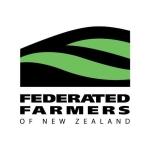It's not what we're eating, it's how much we're eating
Research by the University of Otago, calling into question the consumption of honey, ignores the most important factor; the choices people make.
“The University of Otago needs to ask itself if its so-called non-essential food list (NEEDNT) may have unintended consequences,” says John Hartnell, Federated Farmers Bees chairperson.
“This list could see healthy individuals and parents of healthy children, avoiding food types that aren’t an issue as part of a healthy and balanced diet. I can also see this list going over the heads of the very people it is aimed at.
“It’s not what we’re eating, it’s how much we’re eating. That is what needs to be studied. There’s not an apiarist or a farmer who’ll tell consumers to eat exclusively one product. What we all stress is the importance of a healthy balanced diet and exercise.
“I can tell you honey is so complex, we’re still learning about it. What we know is that it’s a natural sweetener proven over thousands of years. Honey is also full of antioxidants with enzymes, minerals and vitamins as well.
“Because honey is denser and sweeter than ordinary sugar, people can use much less honey to attain the level same sweetness. Honey also contains fewer calories as well.
“Honey’s ‘simple sugars’ are easily digested by the body and enter the bloodstream gradually. Table sugar has almost no nutritional value and delivers what every parent dreads, a sugar rush.
“Yet I don’t want to demonise refined sugar. What the University of Otago’s work highlights to me are our increasingly unbalanced diet and priorities.
“While the University of Otago’s Wellington School of Medicine rightly highlighted poverty using hospital admissions, New Zealand also has an obesity ‘epidemic’. This ‘epidemic’ has driven development of the University’s NEEDNT food list.
“Yet none of this is down to higher food costs despite the hype and what many may think.
“Since the mid 1970’s, what households spend on food as a percentage of income has fluctuated between 17 and 20 percent. In 1956, this figure was well over 30 percent, according to Statistics NZ’s 50 years of food.
“We have also seen the rise of convenience foods and other things for households to spend their money on.
“Again, it’s not what we’re eating, it’s how much we’re eating. That’s where the focus of study really ought to be,” Mr Hartnell concluded.
